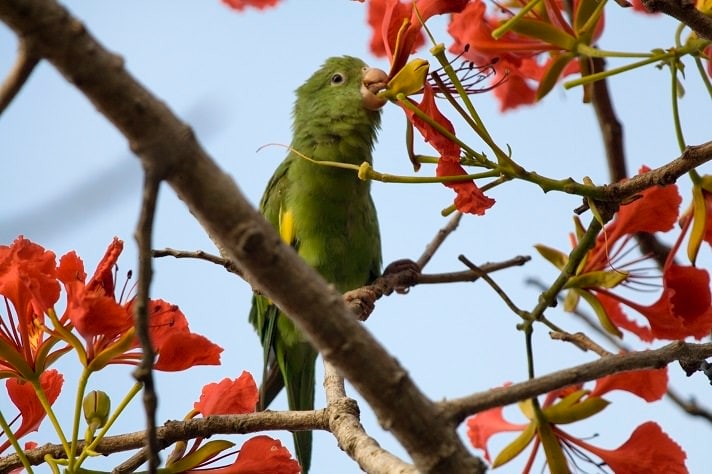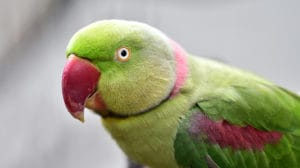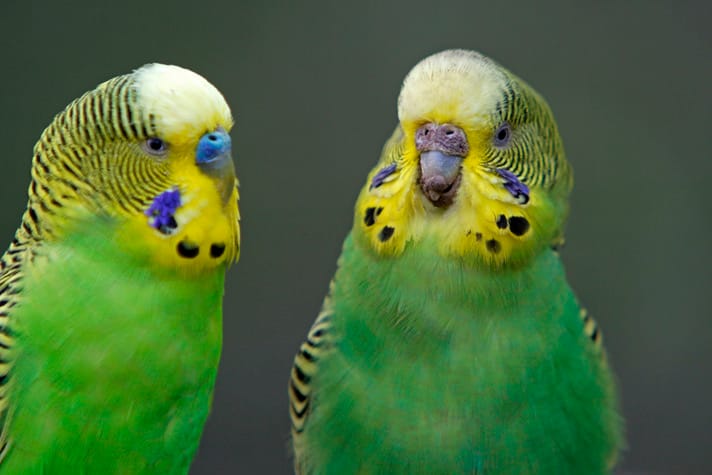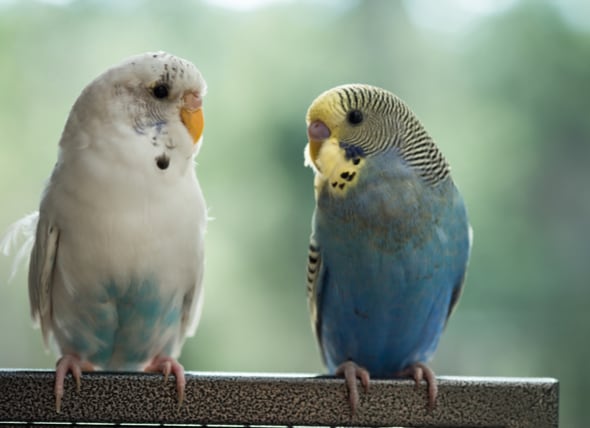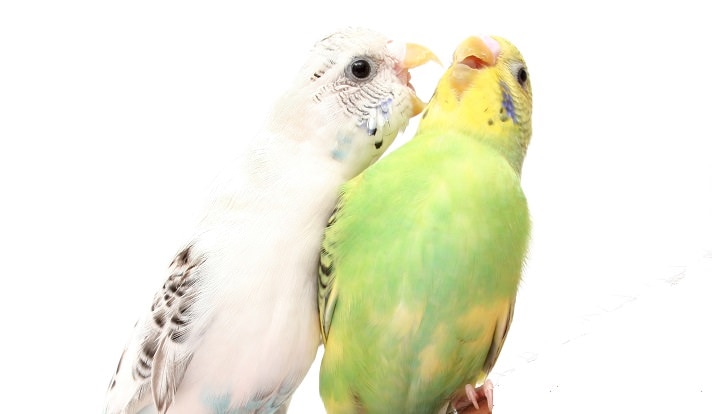Canary-winged parakeets (Brotogeris versicoluris), members of the genus Brotogeris, are small, South American parakeets. Their engaging personalities and gentle temperament made them much sought-after pets during the 1970s and ’80s, when they were imported by the tens of thousands. No longer imported due to the 1992 Wild Bird Conservation Act, canary-winged parakeets are now domestically raised. Hand-raised babies are truly a joy to own. Their owners often describe them as affectionate, intelligent, playful and bold little parakeets.
Active, inquisitive and outgoing, canary-winged parakeets seem to enjoy spending time with their owners and can be affectionate with all members of the family. “I have two canary wing girls that have been with me for five years now,” said David from New York. “They are wonderful companion birds. They will give you as much affection and attention as you give them, so if you’re looking for a bird to do everything with you, you’ve found the one.”
They can learn a variety of tricks, and some even learn to imitate human speech. Canary-winged parakeets can be social with other Brotogeris species as long as patience and care is used when introducing the birds. They do not lose their bonding with their human owners if they receive daily one-on-one attention.
Canary-winged parakeets, like other Brotogeris, produce a loud, shrill call. Single pet canary wings make less noise than several birds. With lots of appropriate attention from their owners and large, roomy bird cages, interesting bird toys and a healthy, nutritious diet, canary wings don’t engage as much in constant, loud calls.
Good Food And Housing
Canary-winged parakeets fed a wide variety of parrot bird food during weaning usually become good eaters. They do best on a good basic diet of seed or pellet mixture for cockatiels or small parrots. Feed them fresh foods such as fruits, vegetables, greens, grains and legumes on a daily basis. Offer greens such as chard, spinach and bok choy, as well as sprouted seeds, nuts (not too much) and whole-grain breads. If your bird is molting, provide protein foods such as cooked egg, bits of cheese and cooked chicken.
Keep canary-winged parakeets in cockatiel or small parrot sized cages of at least 24 by 24 inches. The bigger the better for these active little guys! Make sure bars are spaced 3⁄4 inches or less. Choose bird perches with 1⁄2 to 3⁄4 inches diameters and natural wood branches that offer a variety of perching sizes. Make sure to only use safe wood untreated with chemicals or pesticides; wash it well and zap it in the microwave for a few seconds before use. A canary wing will also appreciate a playgym on the top of the cage to keep it busy. Canary-winged parakeets love bathing, so provide them with a daily bowl of clean water to splash and get soaked in.
With their almost boundless energy, canary-winged parakeets enjoy a huge variety of toys, including those designed for much bigger birds. Owners need to take care to provide only the highest quality, well-made toys because their strong beaks easily destroy flimsy or poorly made bird toys. Check toys regularly to make sure there are no broken pieces or sharp edges, and rotate them to prevent your canary wing from getting bored.
Two Of A Kind
Recently, canary-winged parakeets were separated into two species: the white-winged parakeet (Brotogeris versicoluris) and the yellow-chevroned parakeet (Brotogeris chiriri).
According to Lexicon of Parrots by Thomas Arnt, both birds are similar in appearance, but the yellow chevron lacks the white patch on the secondary and inner primaries that is found on the white-winged parakeet.
Other physical differences include the plumage color, which is much brighter yellow-green in the yellow-chevroned parakeet, while the white wing is a darker, more forest green. The white-winged parakeet has a larger bare facial pattern than the yellow chevron. The underside of the tail of the white-winged parakeet is strongly washed in blue, and the nominate yellow-chevroned parakeet is green (one subspecies of yellow chevron, however, has a blue wash on the tail, although not as strong a blue as the white wing). Finally, the yellow-chevroned parakeet has a darker pink beak than that of the white-winged parakeet.
Why So Few?
If you flip through the classified pages of BIRD TALK, you’ll find a lot of bird breeders specializing in a range of bird species. You won’t, however, find too many who breed Brotogeris parakeets. This once common pet bird seems to have gone missing. What happened?
Gloria Balaban, owner of Shady Pines Aviary in Florida and co-founder of the Brotogeris Society International, traces the canary-winged parakeets’ scarce showing in the pet market back to when the species was first being imported into the United States. “Canary-wings were so plentiful and inexpensive that many breeders didn’t concentrate on setting them up [for breeding]. Many of the birds coming in went straight to the pet trade instead of to breeders.” She added that when the Wild Bird Conservation Act of 1992 stopped the importation of birds, breeders had to rely on the birds that were already here, essentially trying to convert pet birds into breeders.
According to Leslie Gillis, owner of Secret Garden Aviaries in California, “When the imports ceased, there were not many birds in the hands of breeders, and some were mixed with other Brotogeris.” Gillis said that there are now more people working with the canary-winged parakeet. “I did not find them difficult to breed, and they have proven to be wonderful parents. If people are lucky enough to find one in the pet trade, I would tell them not to hesitate in buying it … they are delightful, lively birds.”
Note: This article was written when the canary-winged parakeet was considered one species.
By: Sandee L. Molenda, C.A.S. and Laura Doering
Featured Image: Mirages-nl/iStock/Thinkstock
Share:
